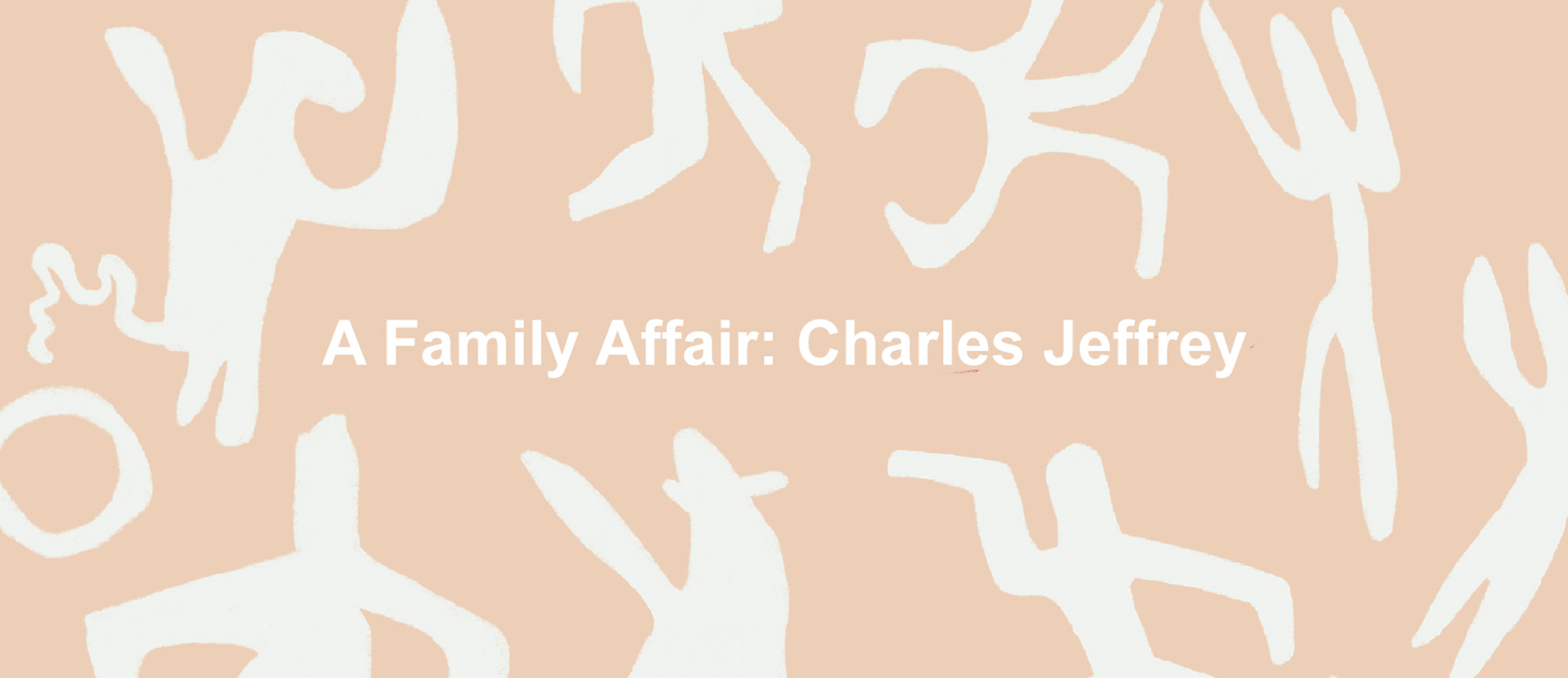
A Family Affair: Charles Jeffrey
Here at Browns, our community stands at the heart of all that we do. From our designers, to our customers, to our colleagues who work alongside us each day, Browns is a business built on supporting the bonds that matter. That’s why we’re launching “A Family Affair”, a project that celebrates our creative communities in the times we need one another the most.
To kick off this project, we’ve asked Browns favourite Kai-Isaiah Jamal to guest edit our first week of events and happenings, selecting some of their nearest and dearest to keep us inspired and entertained. After walking in British designer Charles Jeffrey’s menswear show earlier this year, Kai has nominated the designer, artist and stylist to create some exclusive artworks around the theme of solidarity. Read on to discover Charles’ work and learn more about one of London’s most acclaimed creative names.
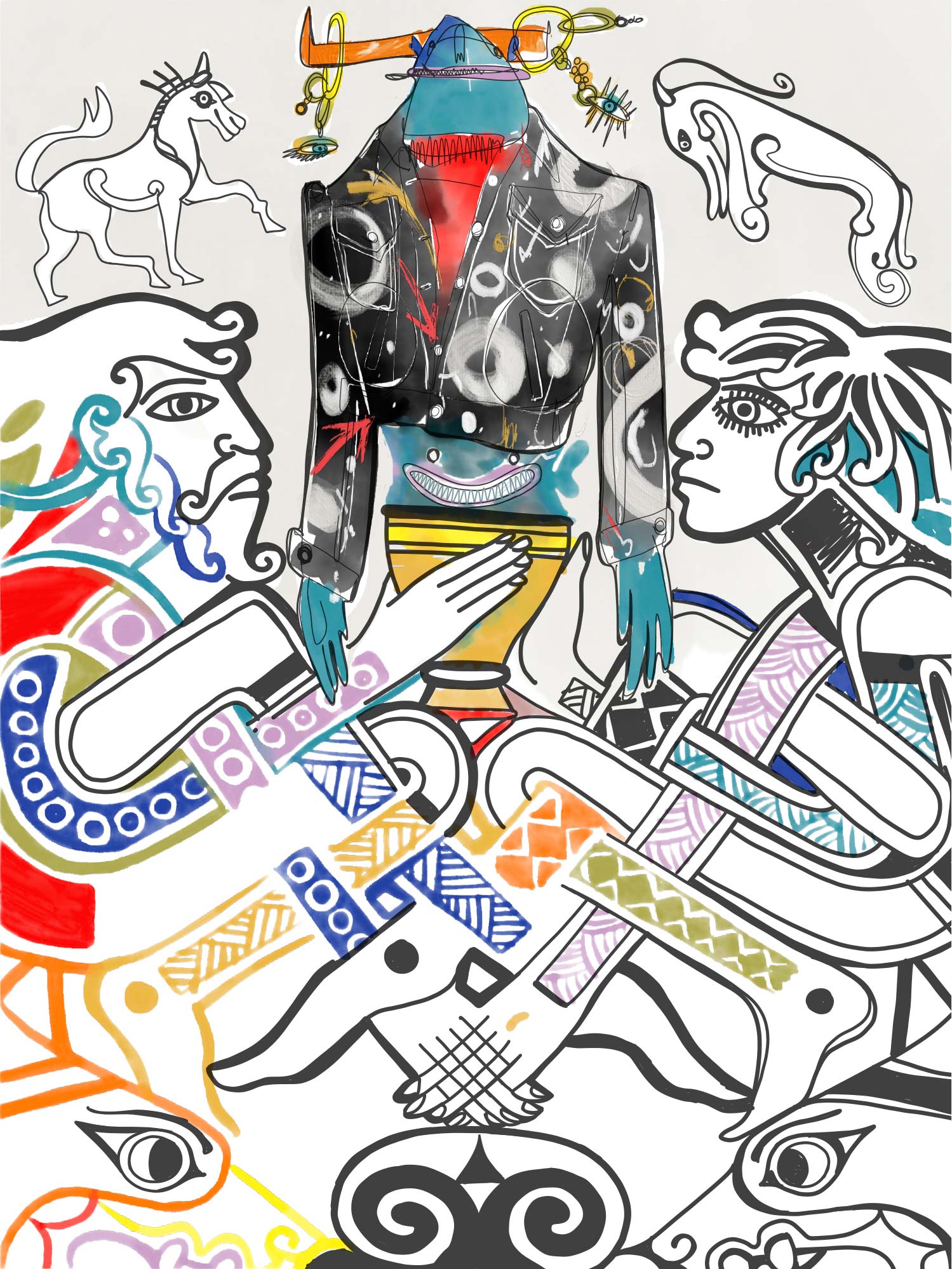
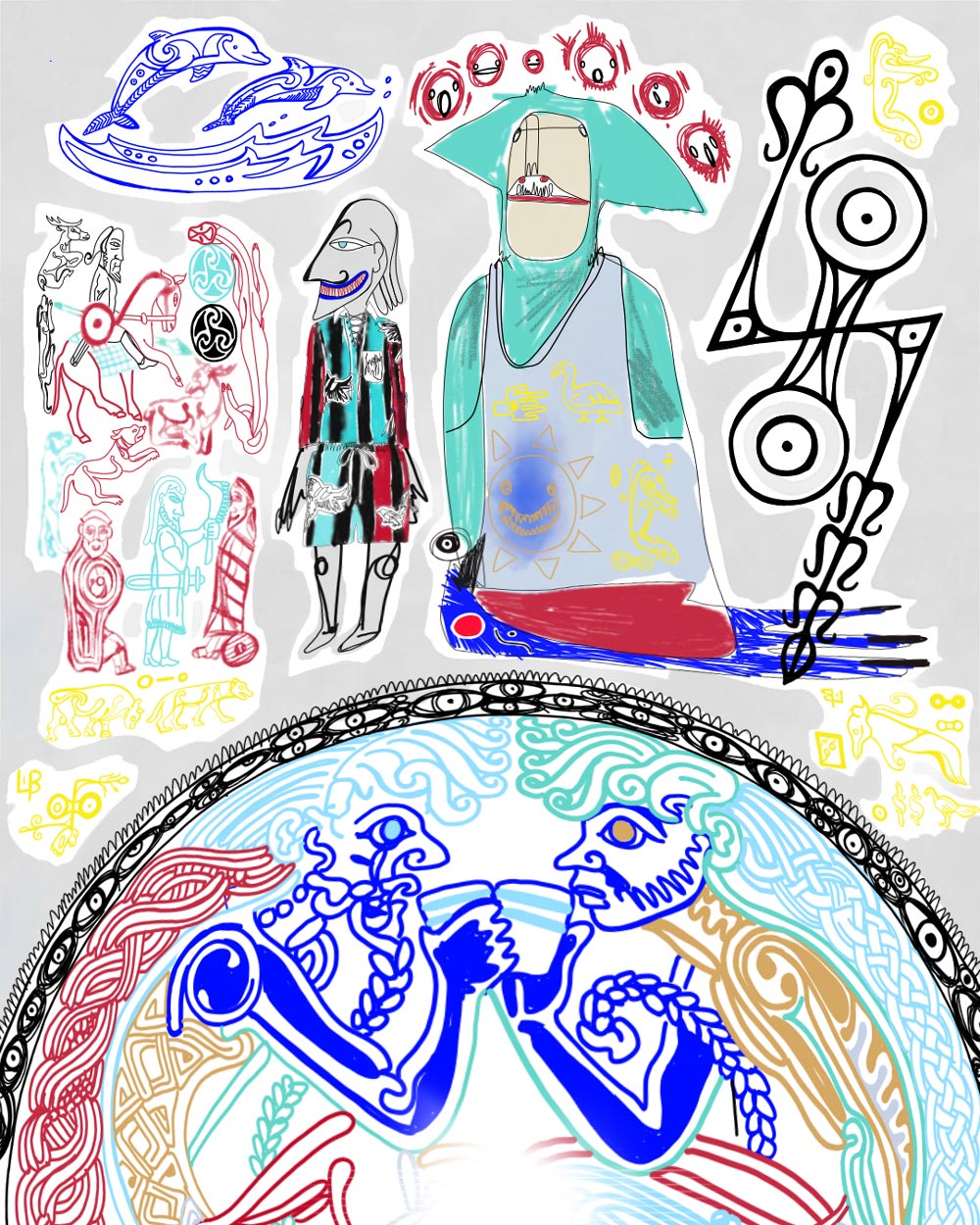
Tell us a bit about the artworks that you’ve created for us.
These are a selection of Celtic Pictish-inspired murals which incorporate LOVERBOY garments and sit in line with Kai’s theme of solidarity. I’ve worked primarily from my iPad and used digital drawing for this, however there are a few scanned pieces that are hand drawn.
Can you talk about your friendship with Kai, this week’s Guest Editor? How did you two first connect?
I met them for the first time at my AW20 show ‘Hell Mend You’. My casting director Madeline Østlie stated that I ‘ABSOLUTELY MUST HAVE THIS AMAZING PERSON IN YOUR SHOW!’ When I saw them in that colourful tracksuit, I knew straight away this would be a moment!
How did you translate Kai’s theme of solidarity into these artworks?
I’ve always thought that Pictish and Celtic artworks hold this idea of solidarity purely by the nature in which they are curated. Figures placed together in close proximity, with style lines that link in harmony with one another. This for me is a visual metaphor for solidarity. I hope what I have done evokes the same feeling too.
What does solidarity mean to you?
It makes me think of teamwork, and the joy in working with a team, especially when you’re clubbing together to work on something you all love.
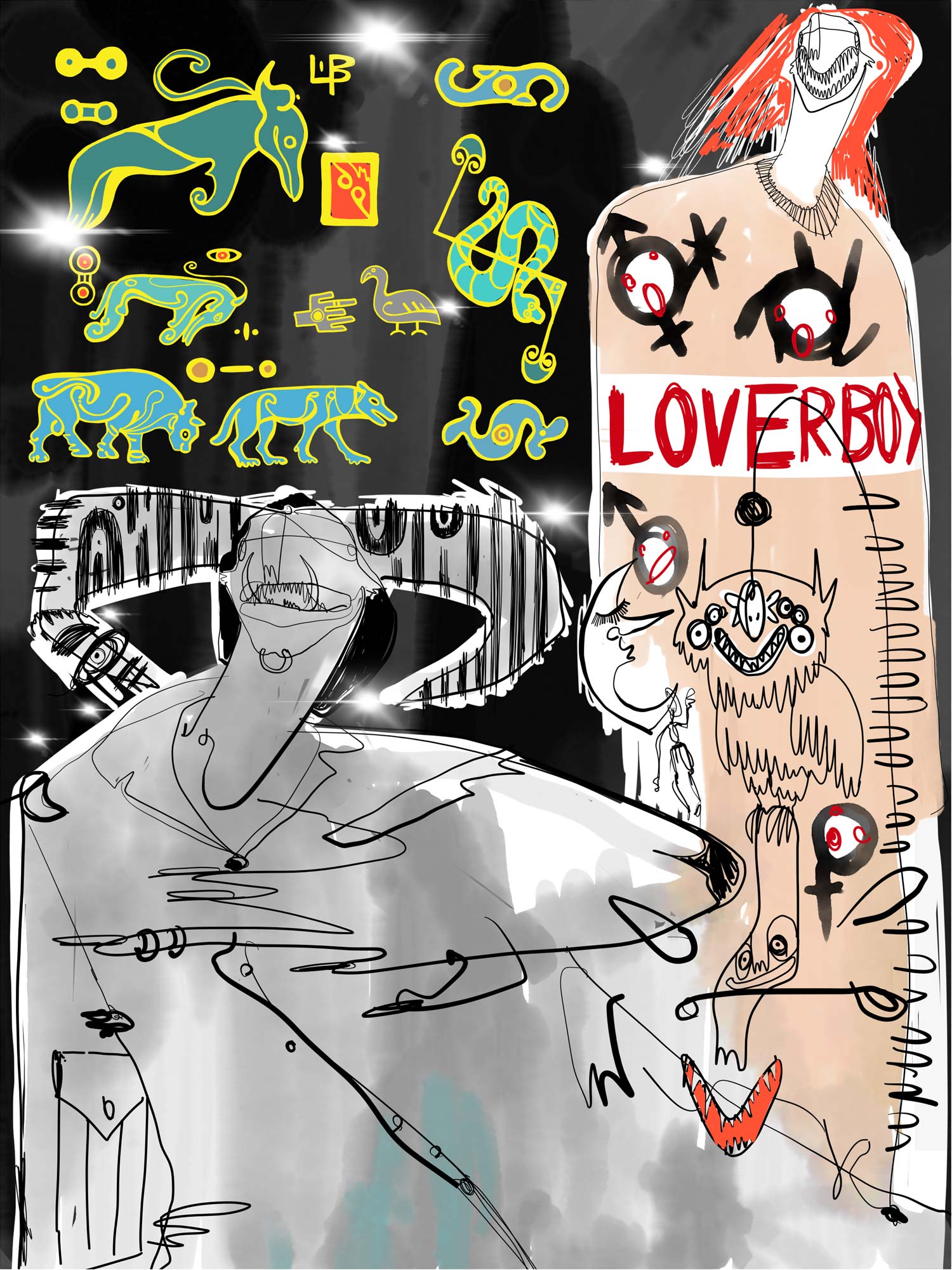
What role has community played in your life?
When LOVERBOY was a club night, community played a large role. It was a specific group of people who all came together to not only get messy and have a good time, but also to contribute to the vision of the night and make work as a family. That really shaped me and my way of working now, and I miss how free those days were.
How has your experience of community shaped your creative output?
It’s really affirmed the idea that ‘No man is an island’, and that in order to put out something that hopefully touches a wide range of people, you do need to have a wide range of contributions and energy put into it. Creativity is a form of magic in my opinion, and the best magic always involves lots of people.
You’re best known as a designer, but you wear many hats as an artist, a stylist and host of London’s best parties. How do the different roles intertwine? Do they appeal to different sides of your personality and practice?
I see it as one big practice. Certain ways of working on a group project like an event or styling a shoot can also relate to drawing - as if you’re viewing the different types of media you’re working with as different people with different skill sets or personalities. It’s all about communication really, and if you’re a good communicator the roles intertwine easily. Again, like drawing, if you can communicate an idea visually then you’re doing the right thing.
What was it that made you want to begin designing clothes?
I’ve always loved video games and playing different characters, and relating that to my own identity. When I used to design my own characters, I would always focus on the clothes and the universe they operated in or the powers they would have. When I saw designers like Gareth Pugh being celebrated for designing clothes that could easily exist within a video game, I realised that what I gravitated towards could also be used to fuel a career in fashion.
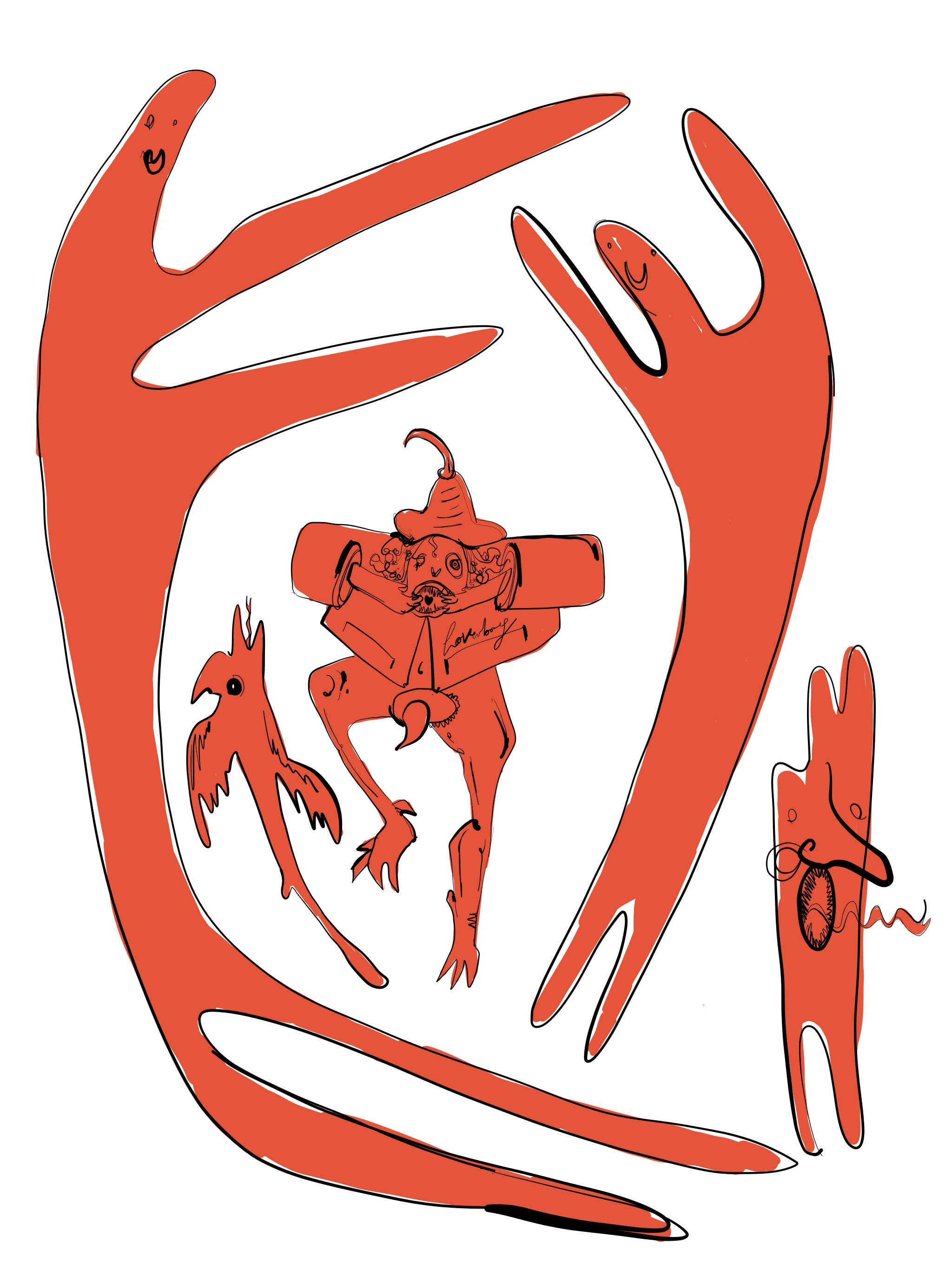
What’s been your most memorable outfit to date?
I think the look I did for the fashion awards 2017. I wore a LOVERBOY jumpsuit and did this sick makeup. I won the emerging menswear category, and John Galliano gave me the award. I looked major!
When designing a collection, where do you generally begin?
I do a lot of primary research. I style looks and do a lot of prints, go to archives like the V&A or the museum of London. I also go and see my friend Steven Phillips who has a wealth of ideas and, most importantly, is Scottish.
How has your practice evolved over the years and what are the lessons you’ve learned along the way?
It’s become a lot faster and more formalised, with lots of meetings to problem solve and align with collaborators. I have learned that the best way to move forward is to listen and to be a good communicator.
What are the most important qualities for a designer working today?
Never compromise the aesthetic, and trust your gut.
What makes London such a special place to live and work as a creative?
How multicultural it is. You can be inspired by any part of it.
What’s the most useful tool for lifting your spirits during hard times?
Music.
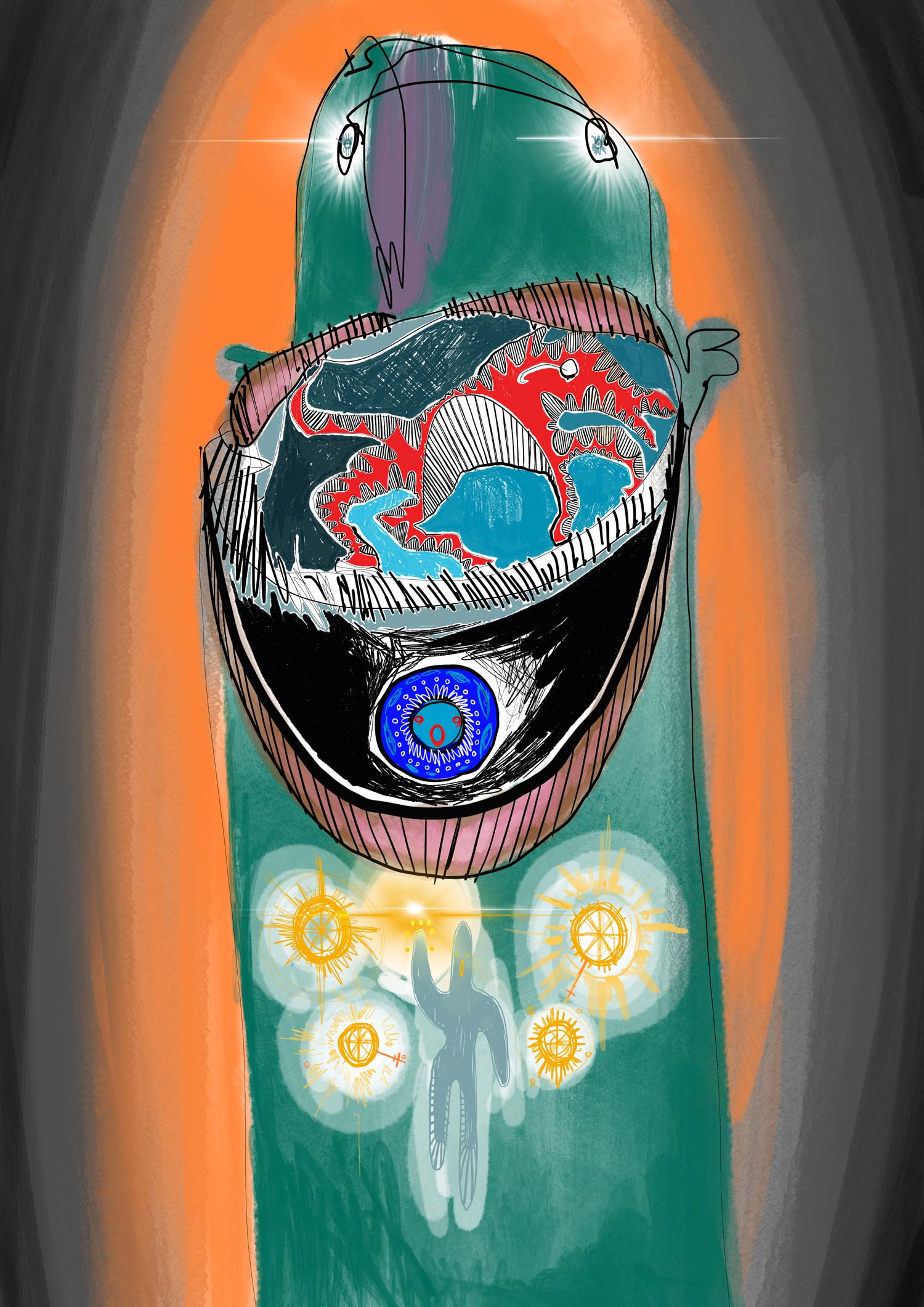
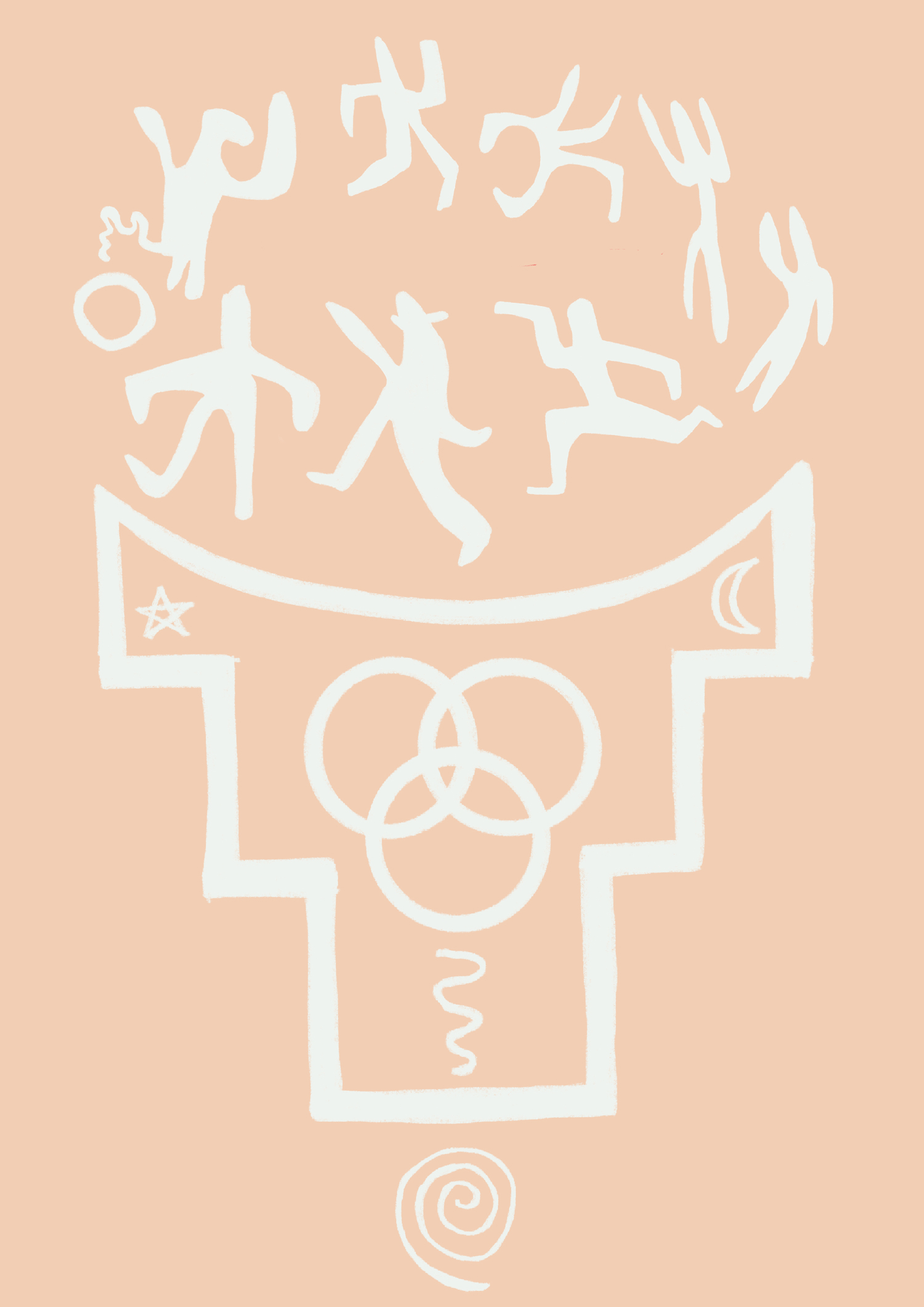
Could you recommend… A book?
The House of Beauty and Culture by Kasia Maciejowska and Gregor Muir.
… A film?
I’m a Cyborg, But That’s Okay by Korean director Park Chan-Wook.
… A snack?
Prosecco.
… A song?
Ravel’s Une Barque Sur L'océan performed by André Laplante.
Related Reading:
Somewhere, We Dance Forever
Songs For The World With Sweyn J
24 Hours With… Baby Bashy